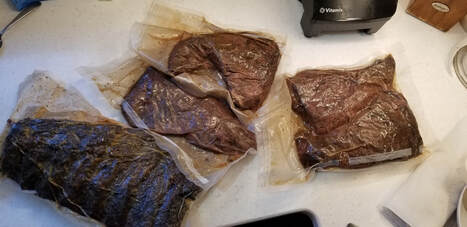 Well now then, make yourself comfy and read on! *First, let me warn everyone to brush up on their food safety! The wrong food in a water bath for prolonged periods could be dangerous and even fatal. One place to read up on what not to do is HERE. Now onto the cooking! Sous-vide is a fun, and often delicious way to cook proteins and vegetables. I received a question yesterday in my inbox asking when the best time is to apply Chef's Palette seasonings to proteins such as a pork tenderloin in this case (thanks for the question Mary B. from St. Helena!). The answer is pretty lengthy, as most answers in the kitchen are - especially if you're asking me and then dependent upon amount variable a) the amount of wine involved and b) if you are curious/foolish enough to keep asking follow-up questions!When you put on your rub depends on when you brown your meat and how. Great flavor comes from browning meat (the maillard reaction) at one or even two stages. I often employ the two stage method when I sous-vide. browning the meat before bagging develops a flavorful crust that is then absorbed into the meat along with salt and some seasoning. Most seasonings do not penetrate deeply into meat even with marinating or sous-vide. Some alliums like onion and garlic will kind of be brought in when curing meats such as prior to preparing a confit, but for the most part it's all about proper salting and a flavorful crust. I typically avoid any wet ingredients going in so I don't have a lot of clean up with the small residential food sealers. Commercial vac chambers can seal wet ingredients without spilling a drop, but take up a ton of space and are not the cheapest. I have been known to manually hit the seal button before BBQ sauce makes it all the way to the top of the bag though. In the top picture you can see some baby back ribs that were smoked for two hours and then cooked for another sixteen hours at 152°F. They were rubbed with my Mighty Fine for Swine before their adventures began and the two hours on the indirect smoker gave them a good flavorful crust. When I served them I brought them back either over a hot grill or in a hot convection oven while lacquering on the BBQ sauce. Pro-tip, use the juices from you bag o' ribs to make your store bought sauce a little better! I sweat minced onions and sometimes a-LOT garlic in a little bacon fat before dumping in the juices and simmering with a bottle of something from the store and maybe some extra apple cider vinegar, honey, and maybe some molasses or Dijon. It really just depends on my mood that day, ya' know? The picture right above here is of some beef ribs and tri-tip, all lightly smoked and then sous-vide (ribs and tri-tip separately and at different temps). The tri-tip was seared in a non-stick pan before service to crunch up the outside but a grill could also work. This leads us into the subject of when to apply rubs or other seasonings. This all depends on the seasoning and the method by which you intend to finish the protein. I often salt large cuts a day or two before cooking, then thoroughly dry the meat and sear on high heat until well crusted. Most of my blends have a low salt content I can then apply them liberally before and after if I like. This keeps them from being destroyed by fire. After I remove my protein from the tank I will either sear the meat in a pan, on a grill, in a screaming hot convection oven, or under a broiler. Never serve soggy meat! Two of my blends do not love high, direct heat and may wind up sticking in some pans: the Mighty fine for Swine does it a little, but the Porcini Espresso much more so. This is because the dehydrated porcinis are hydrophilic, meaning they are attracted to water. This causes them to steal any water they can from the outside of the protein but they are not wet enough to resist being blasted dry by the pan. Being applied after a good hard sear and then cooked sous-vide with the protein hydrates them well enough to stay put when finishing for service. If you sprinkle the Porcini Espresso blend over a piece of meat and toss it directly into a hot pan you can expect it to stick and burn. The remedy for this is to use indirect finishing methods when cooking with any spices or blends that you often find behaving this way. It's not you, it's them ;) A few more pics and descriptions below and also... Speaking of sous-vide: check out Baker's Bacon if you haven't already! Apart from delicious dry-cured bacon he has a bunch of other stuff including sous-vide slab bacon. You take it out, cut a 1/2" slice and toss it in a hot pan, Quickly brown both sides, and sing the Hallelujah Chorus out loud and not just in your head. It's Damn Good! and Tony Baker is good peoples :) who also supports Chef's Palette :) https://www.bakersbacon.com Cheers! Here are some lobster tales that I sealed up with my Seasoned Salt, chives, thyme, charged lemon, and a whole damn stick of butter. I used these juices to mount into a buerre blanc for service. This was after already whisking in soft butter to get it started. I've also gone straight buerre monte with this yummy nectar. I seared this Prime Tomahawk over an oak fire that I was getting ready for smoking, then dropped it in the tank for 24+ hours and finished it by butter basting it in carbon steel. I did this outside to avoid smoking up the house since it was a warm evening anyway so that's why the lighting is not so great. meh. Tasted a-mazing.
1 Comment
|
Dyon J. Foster, Chef/OwnerTips, tricks, tutorials, videos and odd ramblings that will probably mention food and drink! Archives
December 2020
Categories
All
|
Chef’s Palette Spice Rubs
The Chef's Blog
Proudly powered by Weebly
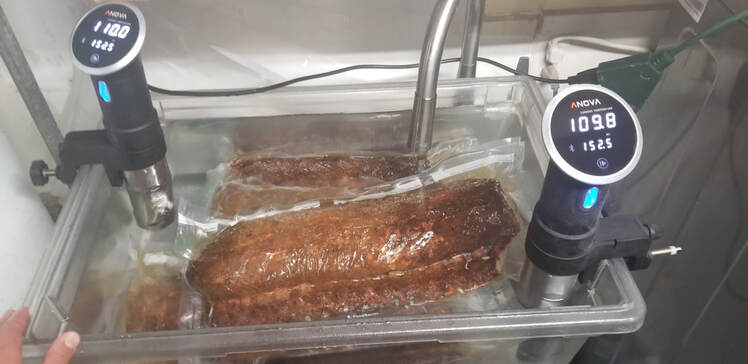
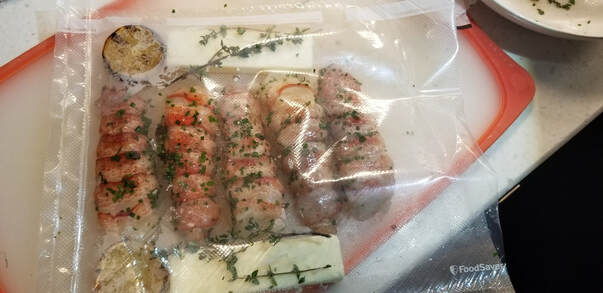
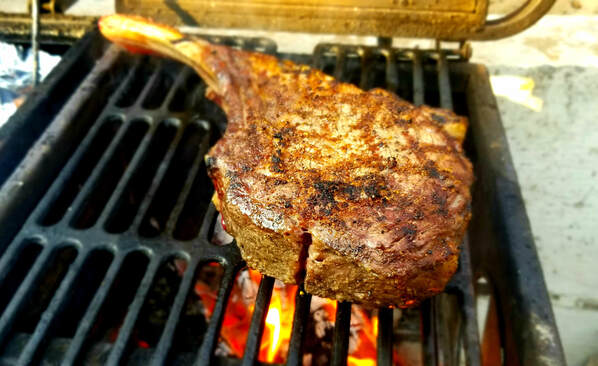
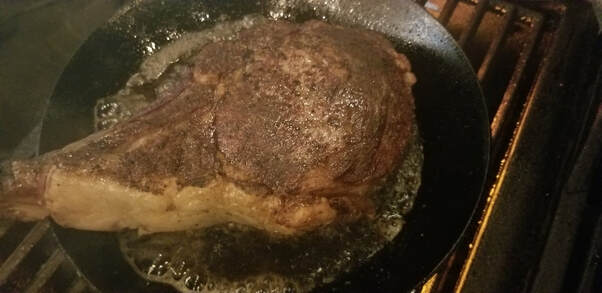
 RSS Feed
RSS Feed